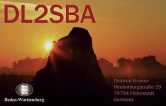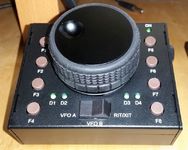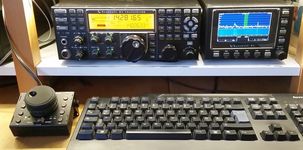My MQTT server also has some basic systems management capabilities - means the MQTT server can emit the following data to the MQTT broker:
- CPU temperature
- Power supply temperature
- Average CPU load
- Uptime of server
Since the beginning of my home automation project I made several tests to choose the right platform and right controller. I've done test with various sensor technologies etc. etc.
Most of the articels can be found in the Arduino category.
One decision was, that my webhost should be the main datastore for all data measured. With this decision, I've started to build a data collection and distribution infrastructure. The complete setup consists of two major components:
These components are detailed further down the page.
Some basic config stuff for the RASPI & MQTT
Last week I received my long awaited K-POD from QRP-Project in Berlin.
My proof-of-concept works pretty stable - please check the status screen:
Here I've build an audio CW-filter based on the circuit from NM0S/4SQRP.
This filter works pretty well. I've done some audio analysis using a cheap soundcard from BEHRINGER and the shareware application AUDIOTESTER.
Now I've finished the Audio CW-filter I've decribed here in details.
Hier eine Sammlung unserer Wanderungen/Ausflüge der vergangenen Jahre
Based on the work of John, M0UKD, I've build a small sensor-keyer. I used a surplus aluminium shelf and two aluminium stand-offs as "paddles".
See the evolution of this project here.
Lorem ipsum dolor sit amet, consectetur adipiscing elit, sed do eiusmod tempor incididunt ut labore et dolore magna aliqua. Ut enim ad minim veniam, quis nostrud exercitation ullamco laboris nisi ut aliquip ex ea commodo consequat. Duis aute irure dolor in reprehenderit in voluptate velit esse cillum dolore eu fugiat nulla pariatur. Excepteur sint occaecat cupidatat non proident, sunt in culpa qui officia deserunt mollit anim id est laborum.
This was my first participation in the WAG contest since 2010 - and I must say, it was a pleasure!
I managed to complete 472 QSOs all in CW :-)
I've planned to sell my ELECRAFT K2 so I placed some adds in the various HAM sources and I found a buyer willing give my K2 a new home.
Fortunately I decided to do a quick check on the K2 functions, to be sure, that the buyers receives a full functional K2.
I did the check in the late afternoon on 80m and I was shocked - strong stations can be received every 7kHz. Testing the transmitter shows a totally unstable RF signal.
I've ordered the LF-converter BX-082 kit from the German HAM Radio magazine FUNKAMATEUR already some months ago and now found the time to build and test it.
It all started with an article in the issue July 2014 of the German amateur radio magazine FUNKAMATEUR. Martin Kumm, DC3MKB published in this issue an interesting article for a smart SMD soldering station based on the well know ARDUINO UNO.
In this post, I've showed, how to setup Mosquitto on an Windows 8 machine. Now let me describe, howto connect an Arduino via Ethernet to the running Mosquitto MQTT broker.
After my first experiments with 2elemtry, I decided to give MOSQUITTO a try. Mosquitto is a small MQTT message broker, which provides basically the same functionality like 2lemetry.
Here the steps, I got Mosquitto up und running on my Windows 8 machine:
During my researches for my home automation project I also stumbled across the MQTT protocol for sensor-server-communication. A matching arduino library was found quickly here on Nick's blog. An arduino sketch was quickly copied from here and modified. Download my version from here.


